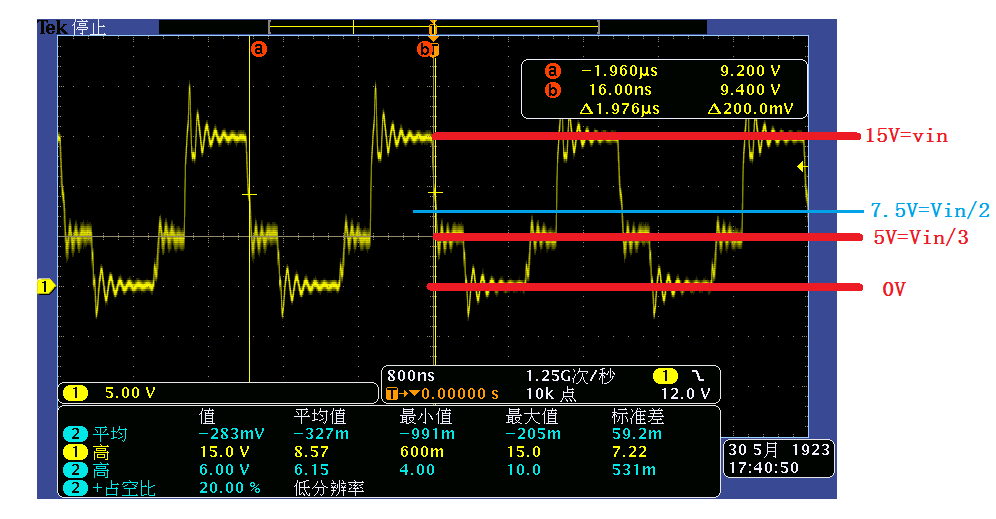Other Parts Discussed in Thread: UCD3138, UCC27524
Hello, I am simulating the UCD3138 full-bridge hard-switching evaluation board to make a DC/DC power supply. I encountered some problems.
The first question:
The UCD3138 PWM0A signal into the digital isolator ISO7140 INB and IND pin, the level will be reduced from 3.3V to 1.2V, and if PWM0A only enter a pin IND , the level remains 3.3V. I tested the development board, PWM0A can drive 2 digital isolator in development board, but My power supply can not.
The second question:
Development board transformer primary winding TP23 or TP25 waveform is 0V, Vin / 2, Vin to change. And I do the experiment board is 0V, Vin / 3, Vin to change. I put the 5k Ohm resistors in parallel with the DS poles of the four primary MOSFETs,but the waveform is still 0V, Vin / 3, Vin to change.
The third question:
My experimental board secondary synchronous rectification driver UCC27524 OUTB pin to work for some time, it is broken, there is no output. I tested the pin, the pin will work when there is a 15V spike, excuse me, is this 15V spike OUTB broken it? What is the withstand voltage of OUTB? I did not find it in the UCC27524 manual.


